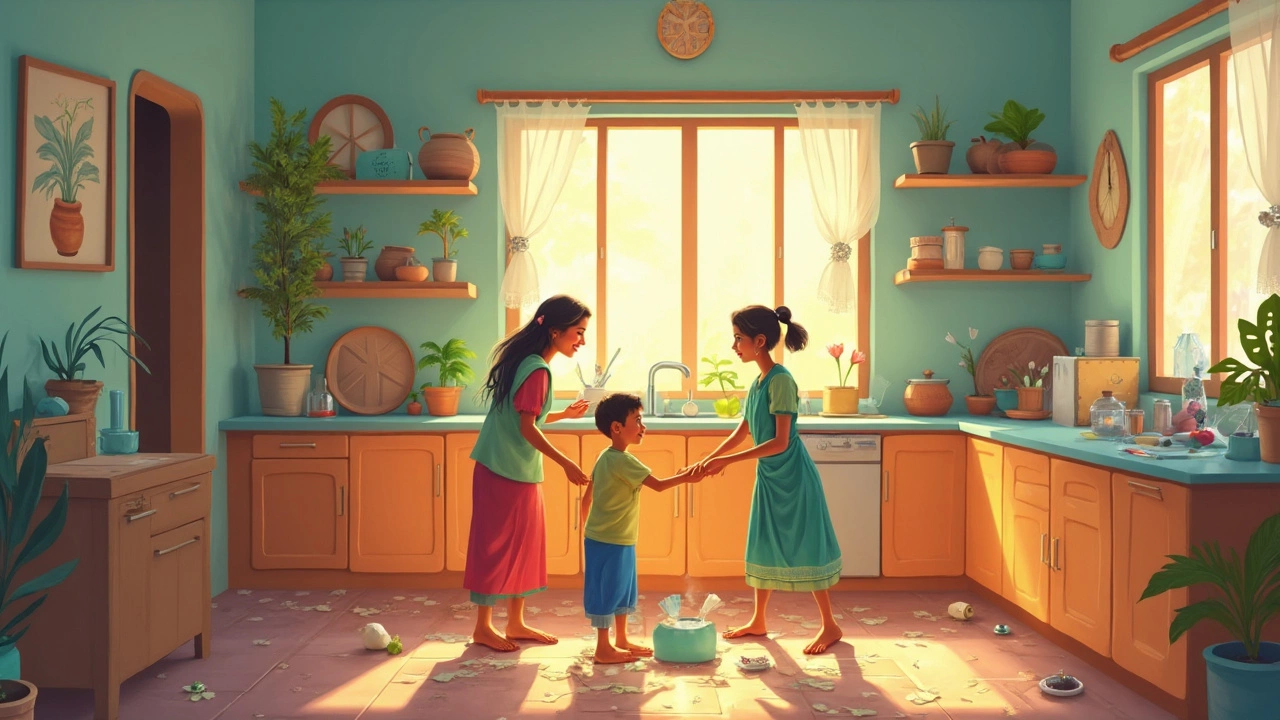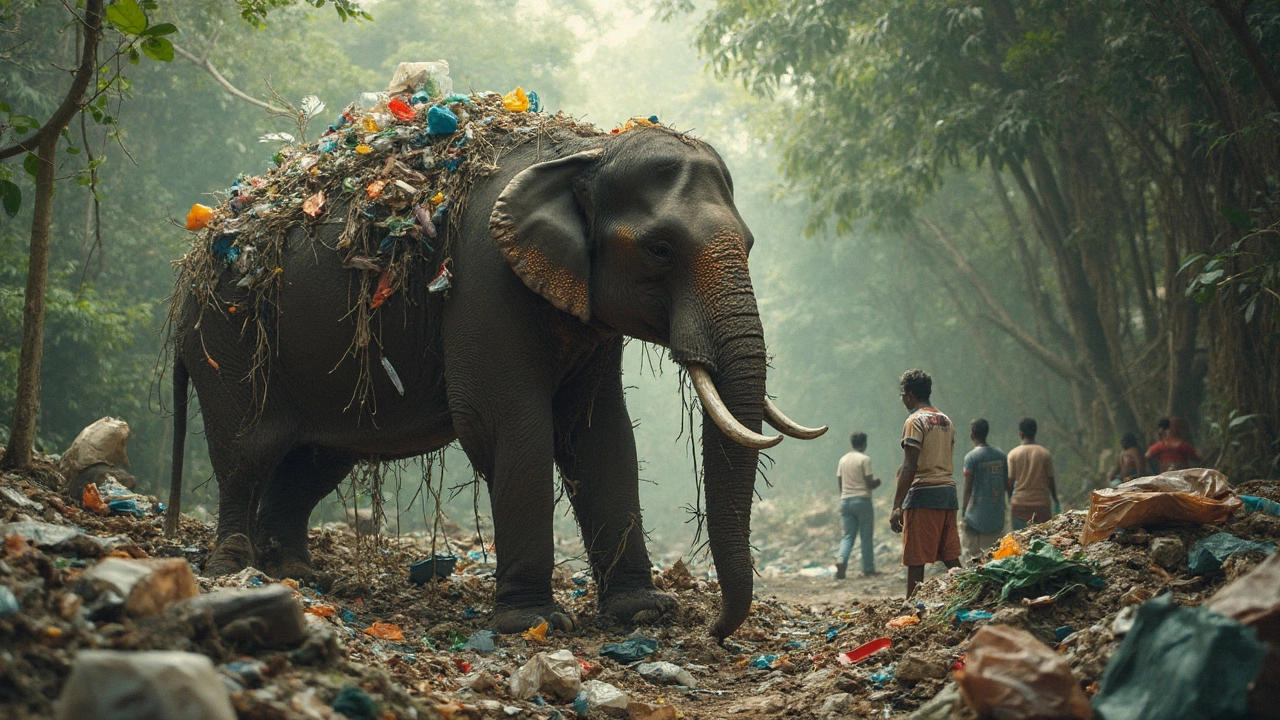Single-use plastics—those seemingly handy items we often use once and toss, like water bottles, straws, and bags—might just be some of the biggest polluters out there. Ever wondered which single-use plastic tops the charts in creating waste? Plastic bottles often take the crown. They're everywhere. From our morning coffee runs to the endless rows in supermarkets, these bottles are a part of our lives but also a big problem.
Why? Because billions of them are produced each year, and only a fraction gets recycled. The rest? End up in landfills or, worse, oceans. Let’s not even get started on plastic bags—they’re lightweight, fly easily, and contribute majorly to landfill overflow. Understanding which items are the primary offenders is the first step in tackling the challenge.
So, what can we do about it? Personal actions matter. A simple switch from single-use bottles to reusable ones, saying no to plastic straws, and opting for cloth bags can make a huge difference. What’s more, industries are seeing the light, too, with exciting innovations like biodegradable plastics and better recycling technologies coming our way.
- Understanding Single-Use Plastic
- Top Offenders in Single-Use Plastic Waste
- Environmental Impact
- Steps to Reduce Single-Use Plastic
- Innovations in the Plastic Industry
Understanding Single-Use Plastic
Single-use plastics are those products designed to be used only once before they are thrown away. Think water bottles, plastic straws, and grocery bags. They're cheap to produce and super convenient, which is why they're everywhere. But here's the catch—they don't go away easily.
How Single-Use Plastics Came to Be
The production of these plastics really took off after World War II when industries found that making stuff out of plastic was both easy and cost-effective. Fast forward a few decades, and they're a part of daily life.
Let's check out a quick fact—did you know that around 380 million tons of plastic is made every year? A significant chunk of this includes single-use plastic that's wreaking havoc on the environment.
Why are They Problematic?
The problem with single-use items is their permanence. While humans enjoy their convenience for a matter of minutes, many of these products take hundreds of years to decompose. So they end up in landfills, rivers, and oceans, polluting everything in their path.
Types of Single-Use Plastics
- Plastic Bags: Often end up polluting our waterways.
- Plastic Bottles: Used for drinks and one of the major contributors to waste.
- Microbeads: Tiny plastics used in exfoliating products and toothpaste.
- Plastic Wrappers: Common with snacks and candies, contributing heavily to landfill waste.
Where We Stand Today
A lot of cities and countries are waking up to the issue. Some have implemented bans on these single-use items, pushing for biodegradable alternatives. But there's still a long way to go. Understanding what they are and their impact is the first step in making better choices.
Top Offenders in Single-Use Plastic Waste
Let's talk about the usual suspects in the world of single-use plastic waste. Spoiler alert: it's more than just bottles. Here's what's clogging up the planet.
1. Plastic Bags
We've all used them—they're handy, cheap, and available everywhere. But did you know billions of plastic bags are used worldwide each year? The problem? They’re rarely recycled and often take hundreds of years to decompose. These plastic waste culprits are a nightmare, especially for marine life.
2. Water Bottles
Convenient? Yes. Sustainable? Not so much. Despite the focus on recycling water bottles, only about 30% actually get recycled. The rest? They end up cluttering landfills or as ocean debris, making them a top offender in plastic pollution.
3. Food Packaging
Pre-packaged foods and takeaway containers bring with them a mountain of single-use plastic waste. From sandwich wraps to ready meals, packaging is inevitable but contributes significantly to the plastic waste problem.
4. Straws and Cutlery
Plastic straws and cutlery, though small, are a big problem. Millions are tossed after a single use. Alternatives like metal or bamboo are trending, which is a hopeful step forward.
5. Coffee Cups
Yep, that quick morning caffeine fix often means more plastic. The lining in most paper cups is plastic, which complicates recycling. Opting for a reusable cup can help cut down this waste.
| Single-Use Plastic Items | Estimated Items Used Annually (Billions) |
|---|---|
| Plastic Bags | 500 |
| Plastic Bottles | 480 |
| Coffee Cups | 250 |
It’s eye-opening to see just how much these everyday items add up to the plastic waste challenge. Awareness is the first step toward tackling it. With more knowledge about these offenders, we can consciously opt for sustainable alternatives.

Environmental Impact
Let's dive into the nitty-gritty of how single-use plastics hurt our planet. Ever thought about where that plastic bottle ends up once you toss it in the bin? A large chunk of these plastics don't just disappear. They often hang around for hundreds of years, cluttering up our landfills, floating through our oceans, and threatening wildlife.
Damage to Marine Life
Our oceans are taking the hardest hit. Marine animals often mistake plastic for food, leading to ingestion and, in many cases, death. Just imagine a sea turtle with a belly full of plastic bags! It happens more often than you might think. This isn't just bad for the turtles; it disrupts the entire marine ecosystem, affecting fish populations and, ultimately, our food chain.
Carbon Footprint
The production and disposal of single-use plastics also have a hefty carbon footprint. Manufacturing plastic emits tons of greenhouse gases that contribute to climate change. Add to that the energy required to transport and dispose of these plastics, and you've got a significant environmental load.
Impact on Land
On land, single-use plastics never truly vanish. They just break down into smaller pieces called microplastics. These tiny nasties have been found in soil, affecting plant growth and potentially entering the food chain through crops.
Recycling Complexities
You might think recycling is the answer, but it's not that straightforward. Only a small percentage of plastics are actually recycled. Some types are harder to process, and the cost isn't always justified, leading industries to opt for new virgin plastic instead. Yep, it’s a tricky situation.
| Stat | Value |
|---|---|
| Plastic in Oceans Annually | 8 million tons |
| Percentage of Plastic Recycled Globally | 9% |
| Average Time for Plastic to Decompose | 450 years |
Ultimately, tackling the plastic waste problem begins with recognizing these impacts and taking conscious steps to reduce our reliance on single-use plastics. Whether it’s pushing for better recycling programs or simply opting for reusable materials, every little bit helps.
Steps to Reduce Single-Use Plastic
Feeling overwhelmed by the plastic waste problem is understandable, but there are simple steps we can take every day to cut back on our single-use plastic consumption. The goal is to make conscious choices and small changes that eventually add up to something big.
Switch to Reusable Items
One of the easiest swaps is using reusable water bottles, coffee cups, and shopping bags. These simple changes don't just save you money in the long run; they also help cut down on the massive number of plastic items piling up in our landfills and oceans.
Avoid Plastic Packaging
Be mindful when shopping. Opt for products with minimal packaging or packaging made from sustainable materials. For instance, buy loose produce instead of those wrapped in plastic. Some stores even offer bulk sections where you can bring your own containers.
Support Local Bans and Initiatives
Many cities and communities are implementing bans on specific single-use plastics like straws and bags. Support these policies by adhering to them and encouraging others to do the same. If your area doesn’t have such initiatives, consider advocating for them.
DIY Household Products
Make your own cleaning products and toiletries to reduce reliance on plastic-packaged goods. Simple ingredients like vinegar, baking soda, and essential oils can clean effectively.
Spread Awareness
Talk about plastic pollution with friends and family. Share helpful resources and personal experiences to encourage those around you to take action as well.
| Item | Annual Usage (Billions) | Percentage Not Recycled |
|---|---|---|
| Plastic Bottles | 480 | 79% |
| Plastic Bags | 500 | 90% |
| Plastic Straws | 100 | 95% |
With these steps, reducing our reliance on single-use plastics becomes achievable. By making thoughtful choices and supporting eco-friendly practices, we can dramatically decrease plastic waste and save our environment.

Innovations in the Plastic Industry
The plastic industry isn't just sitting around while waste piles up. Innovative minds are at work finding ways to reduce plastic pollution and reliance on single-use plastic. From biodegradable materials to advanced recycling methods, there's a lot happening.
1. New Biodegradable Materials
Think of biodegradable plastics as the industry's way of going green. Made from natural substances like corn starch, these plastics break down in months instead of centuries. Companies are now producing biodegradable water bottles, cutlery, and more. It's a win-win for the environment and businesses looking to make a difference.
2. Enhanced Recycling Techniques
Recycling used to mean downcycling, where materials lose quality. But now, chemical recycling offers hope. It breaks down plastics to their basic building blocks, allowing them to be reused over and over without degrading. This process is something many plastic manufacturing companies are investing in, turning waste back into shiny new products.
3. Alternative Materials
Alternatives like mushrooms and seaweed are stepping up to the plate. These materials can be molded into packaging that replaces traditional plastics. While still in the experimental phase, they promise a sustainable future, showing what's possible when we think outside the box.
4. Smart Packaging Solutions
Some companies are looking beyond materials to smart design. By creating packaging that uses less plastic and is easier to recycle, they reduce their footprint. It's all about making small changes that add up to a big impact.
The move towards a sustainable future in the plastic industry is more than just an idea; it's a growing reality. As technology advances, the hope is that we'll see more of these changes globally, cutting down the plastic waste that clogs our planet.
